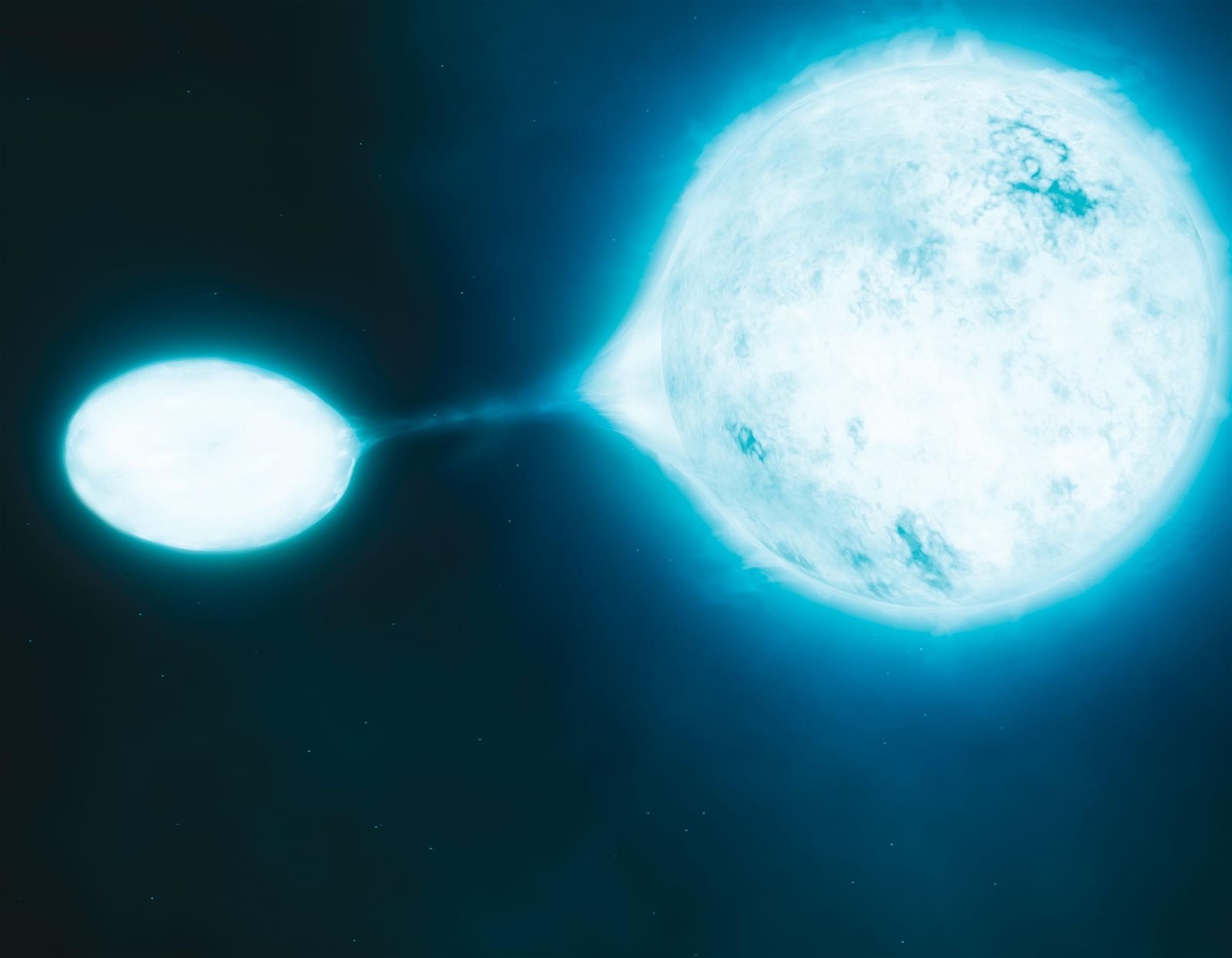
An illustration of a massive vampire star surrounded by a ring of material and orbited by a stripped stellar victim
Some star systems believed to host two stellar bodies may actually have a hidden third – a traitorous star that could help S push one of its sparkling companions towards the other as the latter feasts on its victim like a vampire. Such is a discovery made by University of Leeds scientists analysing data from the European Space Agency’s (ESA) Gaia mission, which pinpoints the positions of a billion stars throughout the Milky Way. The revelation could transform our understanding of how the most massive stars in the cosmos evolve.
These so-called vampire stars, more officially known as ‘Be’ stars, are characteristically surrounded by rings of superheated gas. They’re a subcategory of B stars, which are extremely bright and between 2 and 16 times more massive than the Sun. Yet despite the fact that Be stars were discovered around a century and a half ago, in 1866, quite how the discs around these massive stars form has remained a puzzle.